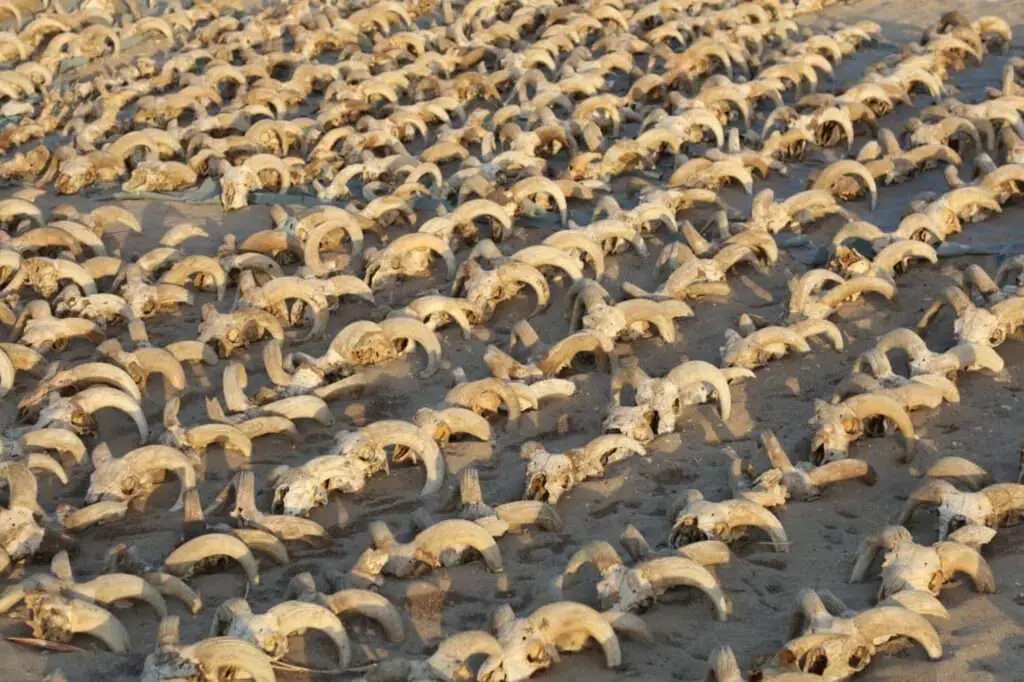Archaeologists have uncovered more than 2,000 ancient mummified ram heads slaughtered in tribute to legendary Egyptian pharaoh Ramesses II.

The heads were unearthed in Abydos near the temple of the ruler and are believed to be more than 2,000 years old.
Experts believe they were left there 1,000 years after Ramesses’ death in 1213 BC.
Abydos – about 435 kilometres (270 miles) south of Cairo – is one of Egypt’s major archaeological sites.
It was reportedly a necropolis for early ancient Egyptian royalty and a pilgrimage centre for the worship of the god Osiris.
Led by New York University’s Institute for the Study of the Ancient World, the mission also found mummified sheep, dogs, wild goats, cows, gazelles, and mongooses in the northern part of the temple.
They also found several statues, ancient tree remains, papyri, and leather garments on the site.
Authorities from Egypt’s Ministry of Tourism and Antiquities believe that the remains were left as offerings for Ramesses II 1,000 years after his death.

Commonly known as Ramesses the Great, the pharaoh reigned over Egypt for nearly seven decades, from 1304 to 1237 BC.
The ministry said in a statement obtained by Newsflash on 25th March: “The American archaeological mission affiliated with New York University, working in the area of the temple of King Ramesses II in Abydos, succeeded in uncovering more than 2,000 mummified rams’ heads dating back to the Ptolemaic era, in addition to a huge structure from the Sixth Dynasty.”
Head of the mission Sameh Iskander said that the five-metre-thick (16 feet) structure could help “re-establish the sense of the ancient landscape of Abydos before the construction of the Ramesses II temple.”
Egyptian officials claimed that the find will expand the current knowledge on the site over a period of more than two millennia up to the Ptolemaic period.
The Ptolemaic period spanned around three centuries until the Roman conquest in 30 BC.
The Ministry added: “The Mission will continue their excavation work on site to uncover more about the history of this site and study and document what has been uncovered during the current excavation season.”



